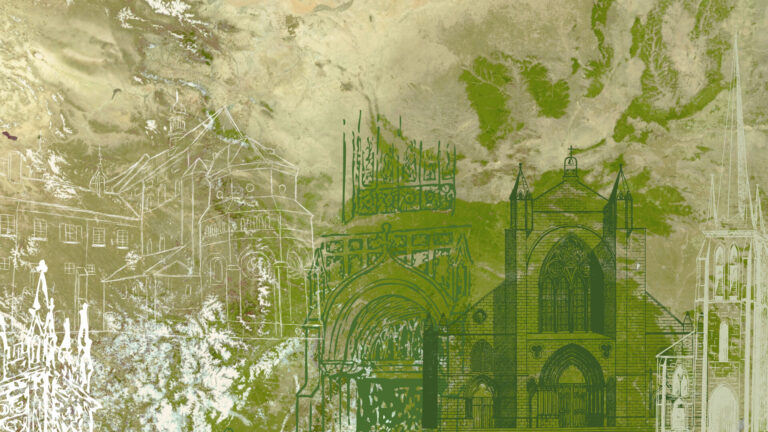Bruchko is a fascinating glimpse of a missionary’s firsthand account of contextualizing the Gospel message for a primitive culture. Bruce Olson’s years of ministry experience provide an intriguing story peppered with nail-biting suspense. His book is meant to be an autobiographical account of his life, and to this extent, it succeeds.
Olson gracefully takes the reader through the twists and turns of his missionary adventures. He does not shy away from the unpleasant or unflattering moments, recounting his bouts with severe diarrhea, hepatitis, and parasites. He is also remarkably honest about his impulsive attitude and his often irresponsible actions. Though Olson is the hero of his book, he does not paint a perfect portrait of himself. His self-effacing honesty is refreshing and helps the reader avoid seeing Olson as a super-spiritual saint.
At the same time, Olson does not shy away from relating his strengths in ministry. He describes forthright his talent for mastering different languages and his ability to assimilate into foreign cultures that often required him to associate with people who held opposing viewpoints. He also writes of his ability to overcome his initial distaste for certain Motilone practices.
Olson’s book raises several thought-provoking questions regarding missionary proclamation of the gospel. First, I was left wondering how much time is necessary for assimilation into a culture before gospel proclamation can or should begin. Olson spends years with the Motilone Indians (two-thirds of the book) before he ever begins to witness. Of course, these years are not wasted. Olson is busy learning the tribe’s language and customs. He is adjusting to their food and their way of life. Only once he has completely gained their trust does he attempt to share the gospel, and even then, this takes place when he is prompted by an external circumstance and not his own plan.
The narrative plays out in such a way that one would doubt that the gospel message would have been effective any other way. The way Olson describes his experiences leads one to believe that had Olson not taken those years of preparation, in which he did not share the gospel story, his message would have been misunderstood and rejected by the natives. Is this the biblical picture of evangelism?
I do not call into question the amazing work that the Lord has done through Bruce Olson. It is evident that God used him mightily to reach the Motilones. However, Olson’s fascination with tribal customs and traditions and his reticence to speak the gospel truth during his first few years with the Indians raise concerns. One would assume that a missionary would be eager to share the gospel at the moment he or she feels able to communicate freely within the linguistic and cultural context of service. Olson does not justify those years of silence, and in fact, he raises the same concern himself.
The second question that arises from Olson’s narrative concerns the nature of the gospel event. The book’s climactic chapter is titled “Jesus the Motilone,” and it recounts Olson’s telling of the gospel story and Bobby’s subsequent conversion. Olson’s contextualization of the gospel message for the primitive Indian tribe is ingenious. He uses Motilone language, myths, fables, and lingo in order to make the message accessible to the people. Olson effectively communicates the theology of the gospel proclamation.
Yet, missing entirely from the discussion is the historicity of the gospel. Olson revels in the fact that the Motilone Indians picture a Jesus who “had dark skin… wore a G-string and hunted with bows and arrows. Jesus was a Motilone”.
Is this the correct way to share the Gospel? There is no relation of Old Testament history or the Creation and Fall. Olson’s Jesus could have lived in any time in any place and been any nationality. In some sense, it is true that Jesus could have come from anywhere. But He did not. Jesus was a Jew from first-century Israel. In the book, Olson does not correct the misconceptions that the Motilones have of the historical Jesus. Instead, he delights in those misconceptions as evidence of his effective contextualization of the gospel message. This quandary is, at least, partly resolved as Olson eventually translates the Gospel of Mark and Philippians.
A third question arises regarding the nature of Indian culture. I was disturbed by how many of the Indian customs went unchallenged by Olson. Especially disconcerting is the Motilone tradition of lifting a corpse to the sky to be eaten by vultures. Olson explains that the tradition is meant to display the departure of the soul to the place “beyond the horizon”. Olson describes it in detail several times, before eventually stating that he plans on having the same thing done to him when he dies. Is this custom morally neutral? I admire Olson’s respect for the native culture and traditions. However, historical Christianity has promoted the practice of burial, in anticipation for the resurrection of the body. These and other theological concepts are not discussed by Olson. The important thing is the “soul,” and not the body. A concept more Gnostic than Christian.
Olson does not counter the Indian customs with the gospel message. He preaches a personal conversion that comes about through faith in a personal Lord. Because of this, Olson’s gospel is somewhat truncated. Jesus is a nonhistorical figure whose story brings about personal transformation but leaves most cultural assumptions largely intact.
Bruchko deserves to be read by all missionaries who are seeking to be culturally relevant in the society to which God has called them. Olson’s passion for the Gospel and his love for the Motilone people are clearly visible in his exciting narrative. Though Olson’s story raises many concerns regarding the extent to which we should contextualize the gospel, it forces the reader to ask hard questions and to wrestle with the implications of what it means to “be all things to all people.”

















